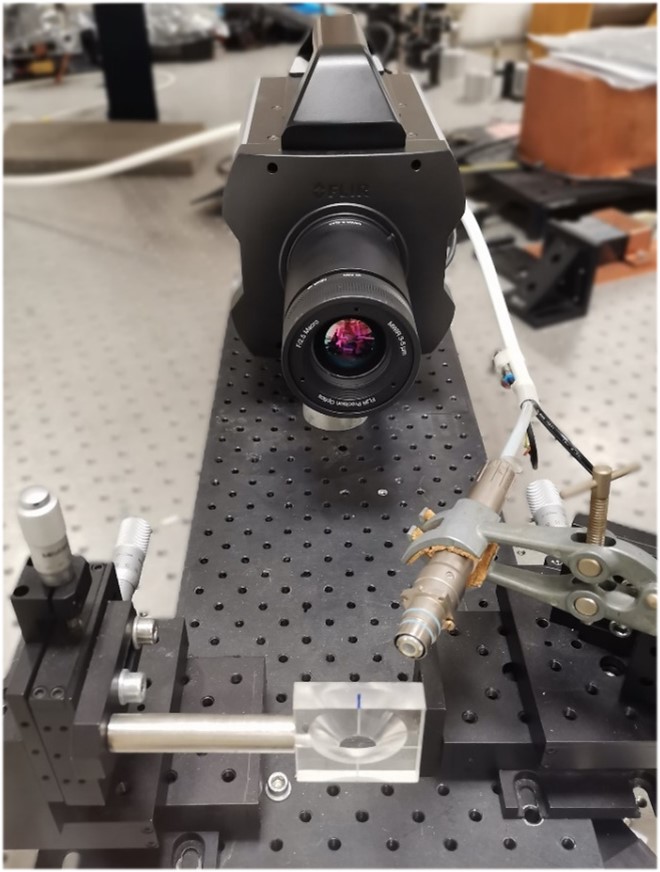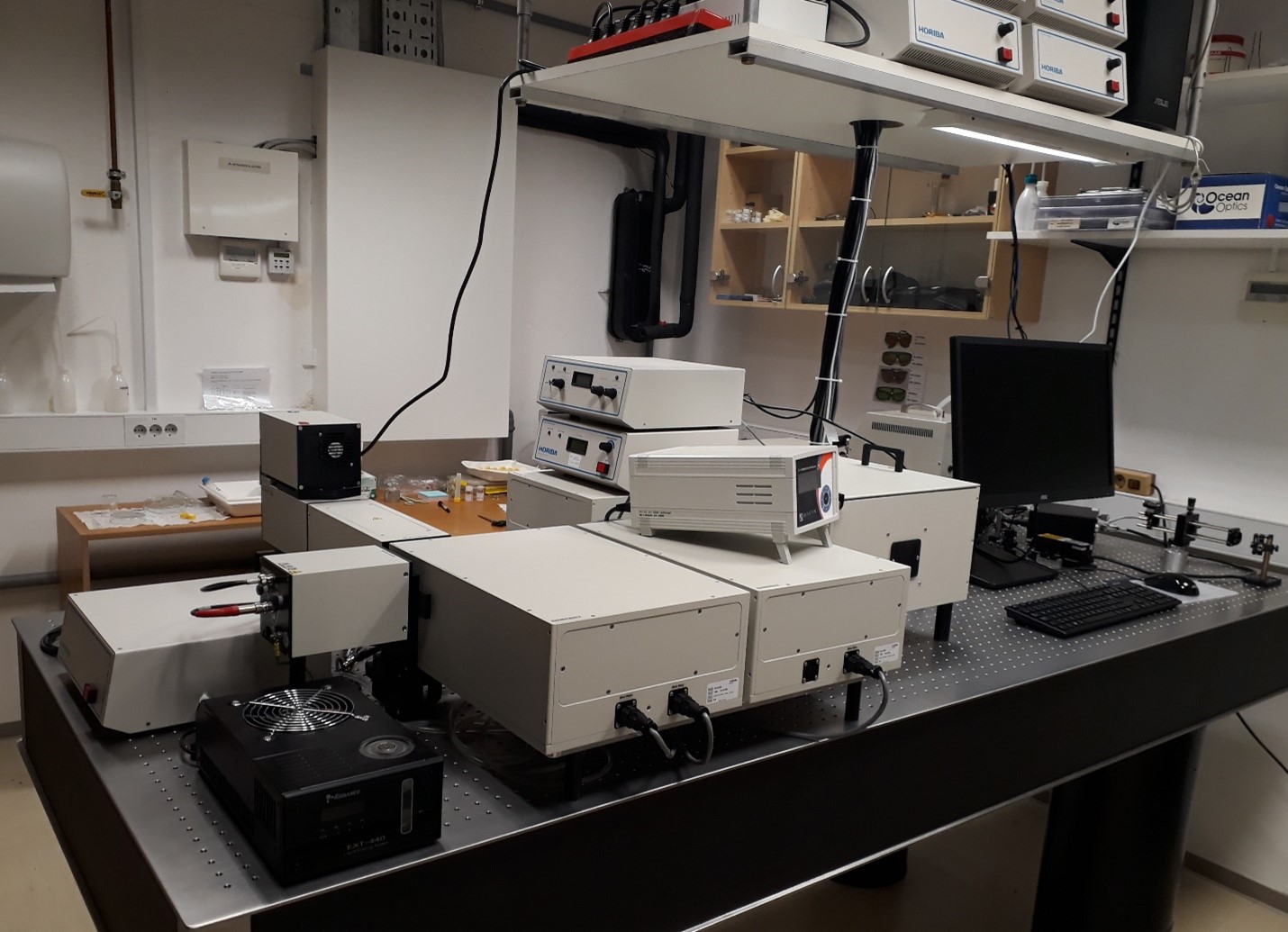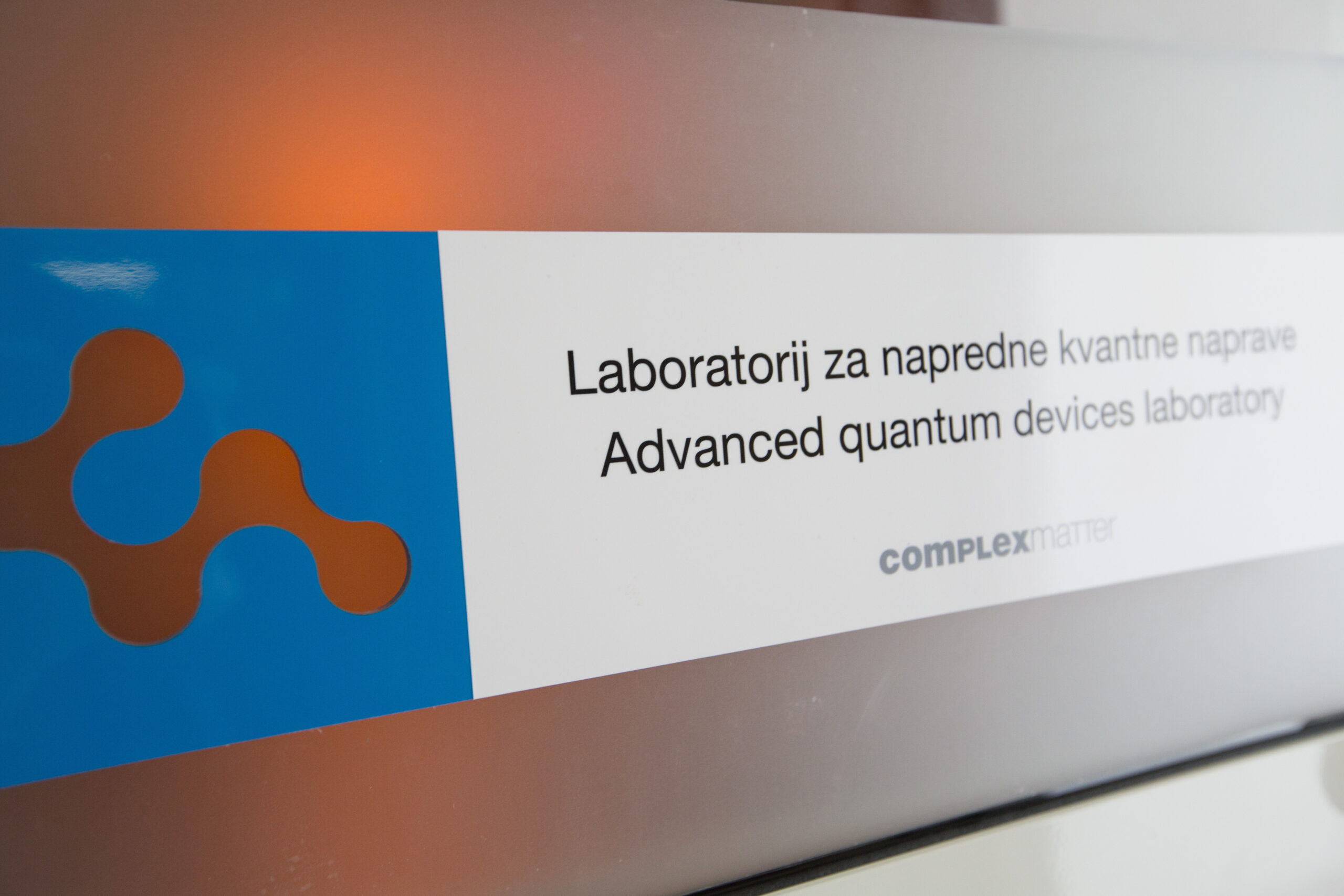Biomedical optics laboratory is involved in R&D of techniques for noninvasive characterization of biological tissues and organs with select pathologies, and nanocrystals for bioimaging and sensing.
Location: Room B001
Mid-infrared radiometry
Responsible person: Boris Majaron boris.majaron@ijs.si
The instrumentation for infrared (IR) radiometry includes a fast InSb array camera (FLIR x6801SC) sensitive to mid-IR radiation with wavelengths between 3 and 5 mm, and acquisition rate of 500 fps in full-frame mode (640 x 512 px) and more with subwindowing. A 50 mm zoom and a “microscope” objective (M = 1) are available, covering a wide range of imaging areas and magnifications. Within the calibrated temperature range of -20 to 350 °C, the NEdT value is 20 mK.
In addition, a liquid nitrogen-cooled single-element InSb detector with custom Si optics is also available for applications which require even lower noise and/or acquisition rates up to 50 kHz.
Several pulsed lasers with wavelengths of 532, 808, 980, and 1064 nm are available for irradiation of the samples, enabling different active thermography measurements.

Optical Spectro-Fluorometer
Responsible person: Boris Majaron boris.majaron@ijs.si
Spectro-fluorometer Horiba-PTI QuantaMaster 8000 with two photomultipliers allows accurate measurements of fluorescence spectra in UV, visible and near-IR spectral range (300 to 1450 nm), and assessment of fluorescence times down to a few microseconds. Polarization-dependent measurements of both emission and transmission spectra are possible from 300 to 900 nm. The instrument is equipped with a continuous and a pulsed Xe lamp. Continuous and pulsed lasers with wavelengths of 808 and 975 nm are also available, while other lasers can be introduced via a fiber-optic port.
Measurements can be performed in liquid samples (with temperature stabilization or ramping from -20 to +105 degrees Celsius), solid samples, and powders. An integration sphere enables measurements of absorption and emission spectra of optically scattering samples and assessment of fluorescence quantum yields.

